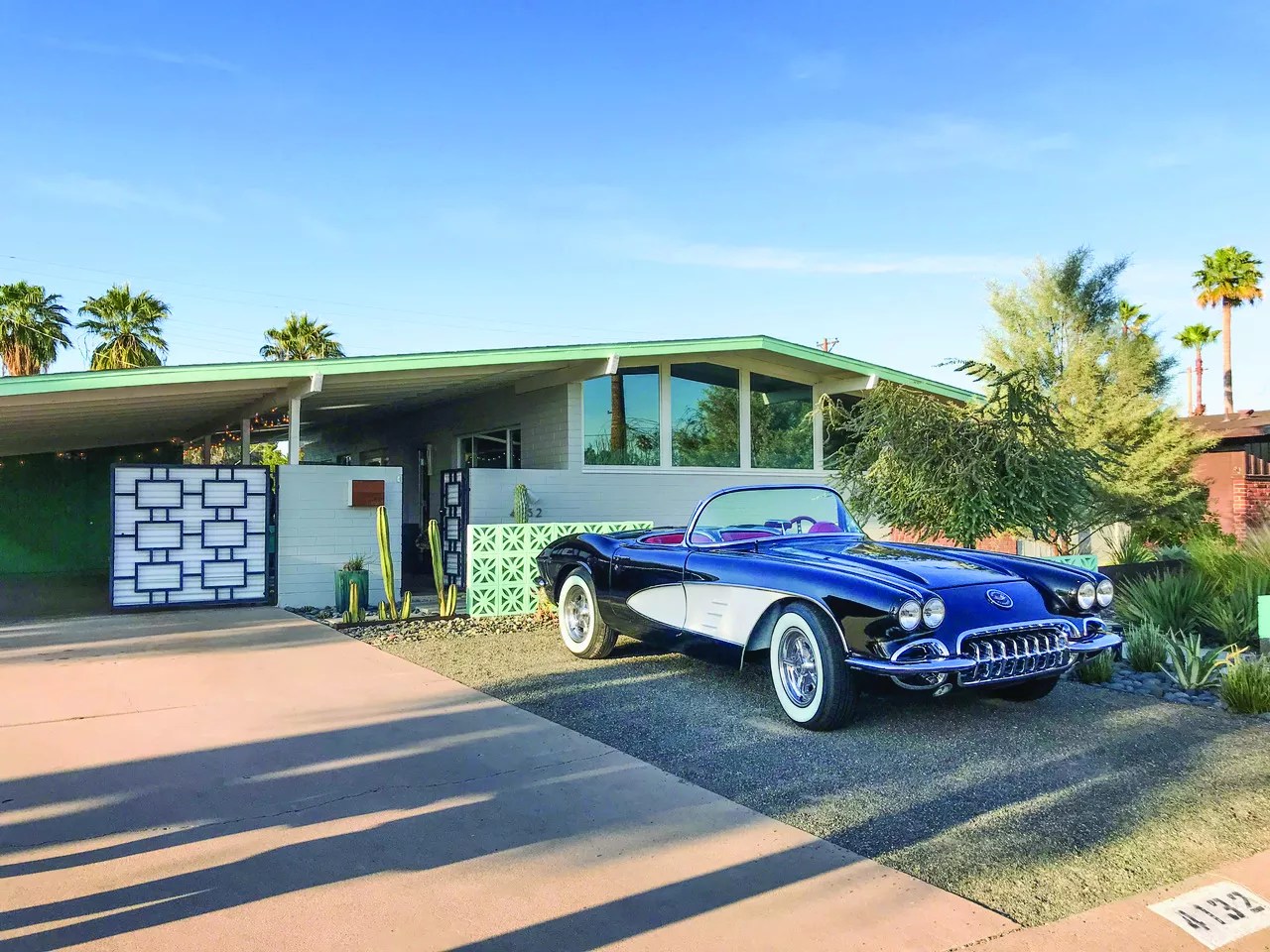
Alison King

Audio By Carbonatix
I have confused the plumber.
His name is Dave, and he seems nice enough. Here to install a new garbage disposal, Dave notices the turquoise-and-cream Formica countertops in our kitchen, and I brace myself for a conversation I’ve had perhaps 6 million times before.
“I guess you’ll be ripping out this old stuff and putting in granite,” Dave says, patting the counter and chuckling.
You don’t have to tell him the truth, I think. He’s just making conversation. People don’t really care about this stuff.
Phoenix, make your New Year’s Resolution Count!
We’re $14,000 away from our End-of-Year campaign goal, with just a five days left! We’re ready to deliver — but we need the resources to do it right. If New Times matters to you, please contribute today to help us expand our current events coverage when it’s needed most.
But I can’t help myself.
“Actually,” I tell poor Dave, “we just ripped out all the granite and put this vintage-repro Formica in its place.”
I’m a longtime restorationist, so Dave’s baffled expression isn’t new to me. Neither is his sputtering response, which includes phrases I know by heart: “But you’re supposed to -” and “Wait, you tore out -” and, of course, “Usually, most people -“
Restorationists aren’t most people. We’re not interested in hot new interior design trends or what’s for sale on a Lowe’s endcap. More attentive to how things used to look, we’re accused of wanting to go back in time; of living in time capsules; of mental illness.
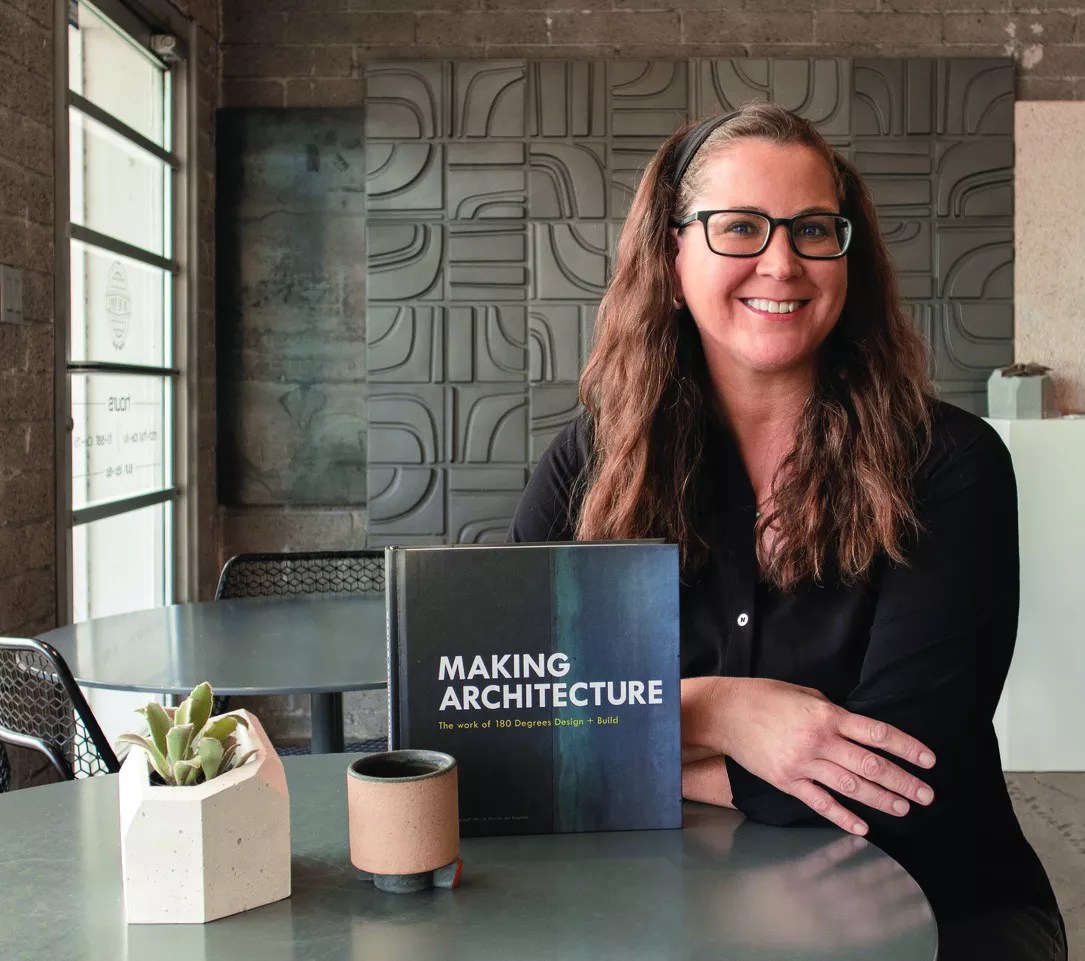
Modern Phoenix co-founder Alison King, whose book Making Architecture just won an Addy Award.
Samuel Ybarra
“We’re an interesting bunch,” Alison King agrees when I call to tell her about Dave the plumber, and to confide my deep love for Alfred Beadle’s Fifth Avenue Professional Building, visible from the 1964 Beadle home my husband and I recently purchased.
She concurs about the blocky office building I can’t stop staring at. “That one’s a beauty.”
Alison knows. She and her husband, Matthew, co-founded Modern Phoenix: The Neighborhood Network in 2004 and have since become the go-to people for all things midcentury. While my husband and I have restored an Alfred Beadle condo, Alison and Matthew have done quite a lot more by fostering a citywide appreciation of Phoenix architecture. The couple’s website and annual Modern Phoenix Week (which starts this Friday, March 13, and runs through Sunday, March 22) are scholarly – both are teachers; she teaches design, he teaches art – yet there’s also a folksy, “we’re all in this together” charm. The site is a resource for students and educators of Phoenix’s architectural history; the yearly celebration includes seminars and mixers and a daylong home tour of midcentury gems.
“Someone asked me if I’d heard about this husband and wife driving their minivan around, mapping out midcentury neighborhoods,” says Lesley Oliver, recalling Modern Phoenix’s early days. At the time, Scottsdale Museum of Contemporary Art was looking for architecture-related exhibitions, and Oliver, then SMoCA’s marketing and PR manager, pitched the Kings’ project as a potential partnership. The Kings remained with SMoCA through 2016.
It’s nice that there’s a website where one can read up on Charles Polacek or study Dean Coffman’s drawing portfolio, and even better to have a whole week just for midcentury building-huggers and fans of Park Lane amber glass. But the Kings’ devotion to design principles likely has a larger, longer-lasting value to Phoenix.
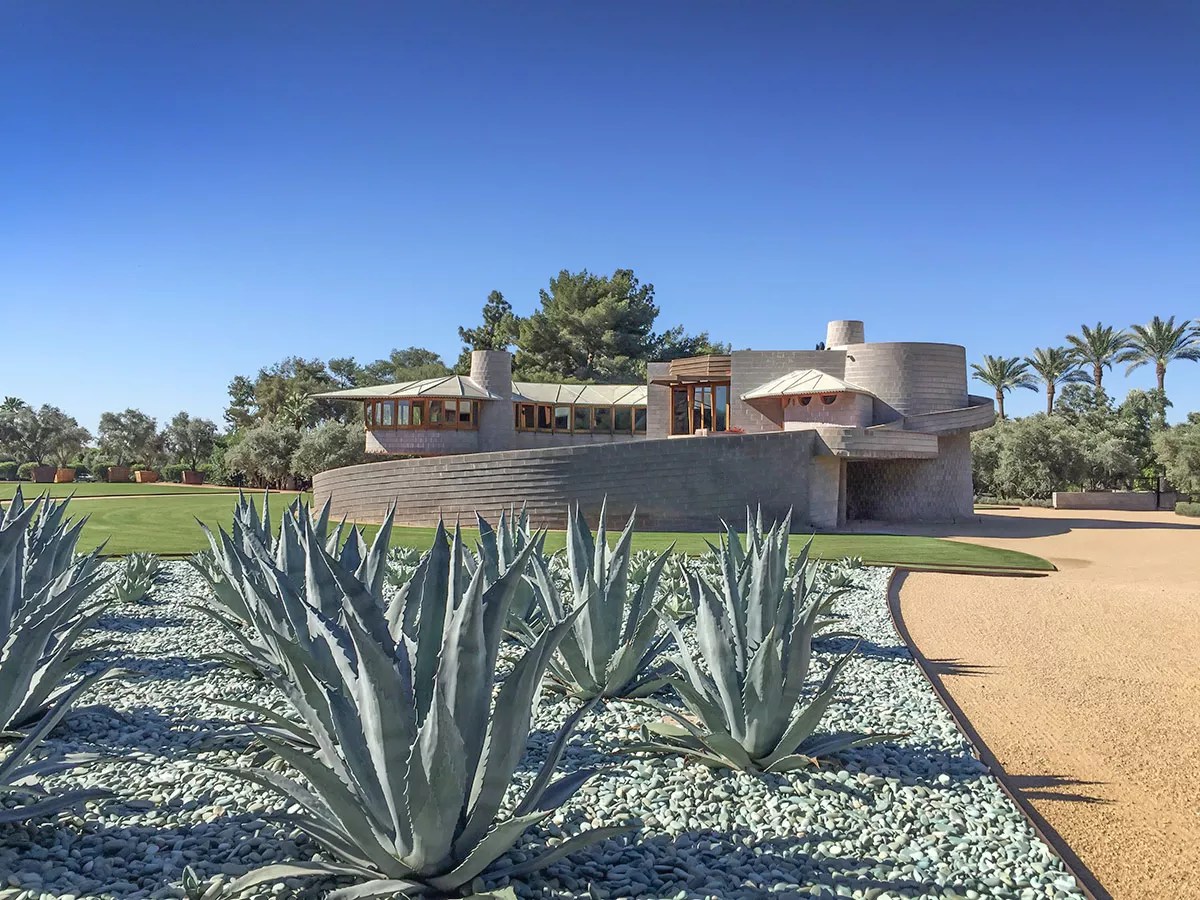
Many local activists claim Modern Phoenix was instrumental in saving the David and Gladys Wright House, a Frank Lloyd Wright design.
Alison King
“We’re a city that’s constantly in danger of being razed,” Oliver reminds me. “We could end up with rows of brand-new, faux-Tuscan manors without activists like Matthew and Alison. What would have happened to the David and Gladys Wright home if they hadn’t planted a flag here?” she asks, referring to the recently endangered and historically significant Arcadia property designed by Frank Lloyd Wright for his son and daughter-in-law. The Kings’ attention to its preservation, many will tell you, is what kept the house from being bulldozed a few years back.
“Yes, we have historic preservation offices here,” Oliver says. “But their hands are often tied. The Kings offer a different level of advocacy for preservation, because they’re arguing for something other than the price tag of a building that deserves to be saved.”
Alison King won’t boast. “I’ll admit it’s good the city has a reliable source they can turn to,” she says, referring to the Modern Phoenix website. “But I really just built the resource I wished I had when I was learning about all this stuff.”

Alfred Newman Beadle
Dansons
I ask Matthew King what Phoenix would be like today if he and Alison hadn’t returned here, to their hometown, after college. Would so many of us be having a love affair with breeze blocks and Blaine Drake? Would more cool old buildings have been knocked down?
“I’d like to think someone else would have stepped up to educate and advocate,” he tells me. “But Alison is such a dynamic person, a good writer who understands marketing and web design, so I don’t think we would have gotten someone on her level. Phoenix was lucky to get her.”
Matthew believes that even without his and Alison’s boosterism, hipster culture would have helped revive interest in local midcentury architecture. Hipster culture itself, he claims, is a response to what he calls “the stick and stucco era” of later home building here.
“There’s an embrace of realness in hipster culture,” he says. “They appreciate the artisanal, and the locally made, all of that. They saw the bad design that was popular in the ’90s and early 2000s and turned away from it. The architecture we happen to cover fits well with that thinking.”
I’m no hipster, but I share Matthew King’s theory. Some of us grew up here in the Valley, in franchised, slump-block subdivisions built not on keen design principle but on the satisfaction of small desires. What mattered was our proximity to the mall, where we could buy things we didn’t know we needed. We couldn’t tell you who designed our home, or which developer built it. But we knew which grocery stores had bigger parking lots we could get to easily, on streets with extra lanes so we could arrive more quickly. When we reminisce about the old neighborhood, my childhood friends and I recall the sandwich place and the head shop and the video rental store, but never the plat of now-sought-after Ralph Haver homes that bracketed our subdivision.
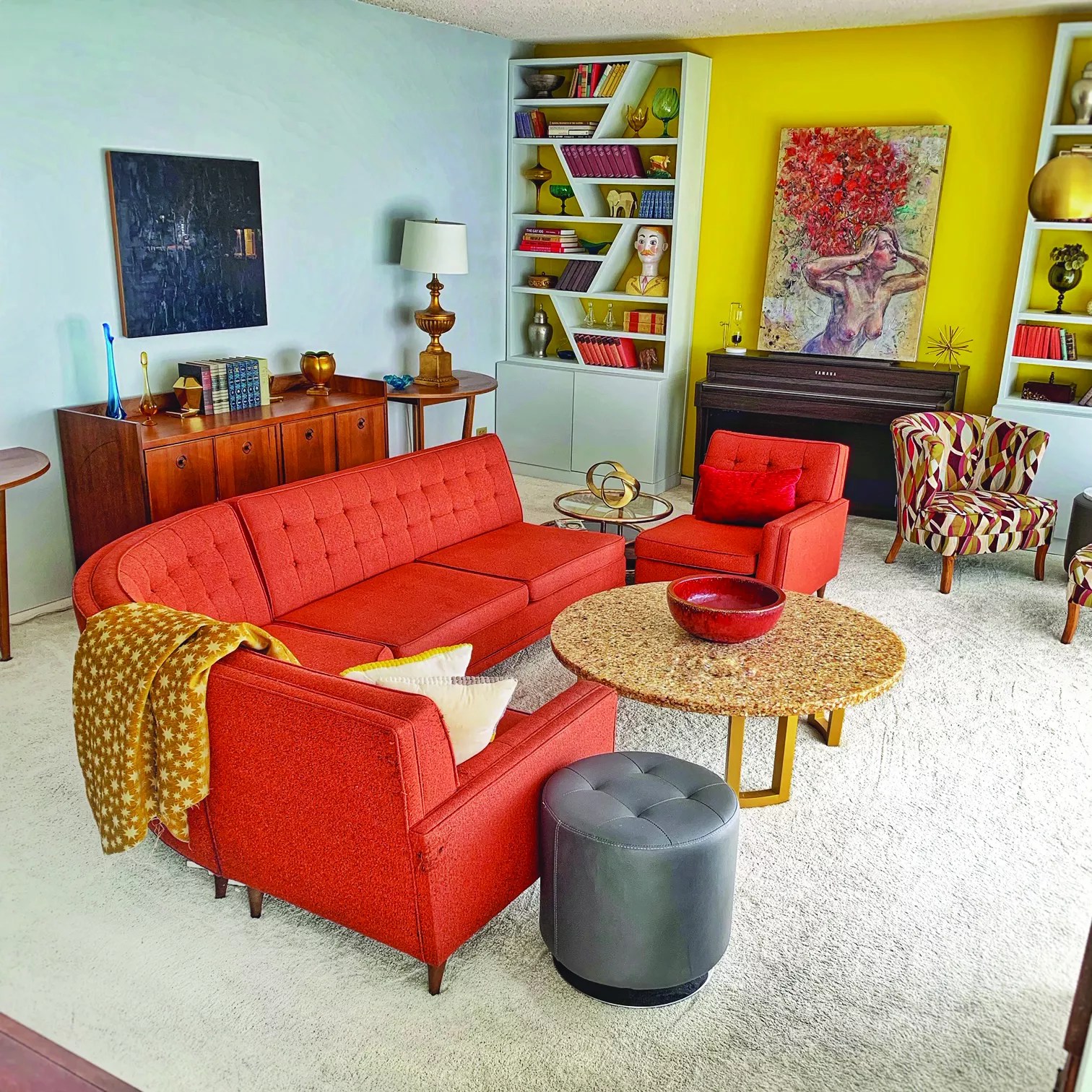
The living room of the author
Todd Grossman
We were raised in enclaves that taught us to stop caring about what things looked like and to care instead about having more choices. Or the illusion of more choices, anyway. Few of us noticed that the menus at all those chain restaurants offered similar food; that the aisles in the bigger, better grocery stores did little more than offer 18 types of toilet paper rather than, say, the 12 variations the smaller market might.
I’ve become convinced that all this ease-of-living stuff led to the ugly architecture that swallowed up so much of Phoenix during the 1980s and beyond. “Who cares what it looks like or whether it’s well-made?” developers seemed to be asking with their rounded-corner, taupe-stucco, Styrofoam-and-chicken-wire strip malls. “It’s close to Costco and a water park!”
I figure Walt Lockley can tell me if my “why now?” theory is cocked-up. He’s an architecture writer who’s covered adaptive reuse and historic preservation in Phoenix and beyond. Have we become admirers of midcentury architecture and design, I ask him, because we’re turning away from the ugly junk that’s grown like Topsy around here?
Lockley isn’t so sure. “I think it’s more that only about 20 percent of architecture isn’t crap,” he admits, and we both guffaw. “The rest of it, in any era, is what survives.”
It’s probably just, Lockley says, that people exposed to good design are more likely to seek it out. “And the Kings launched Modern Phoenix at a time when many of us had access to what they were publishing, because they’re publishing on the internet.”
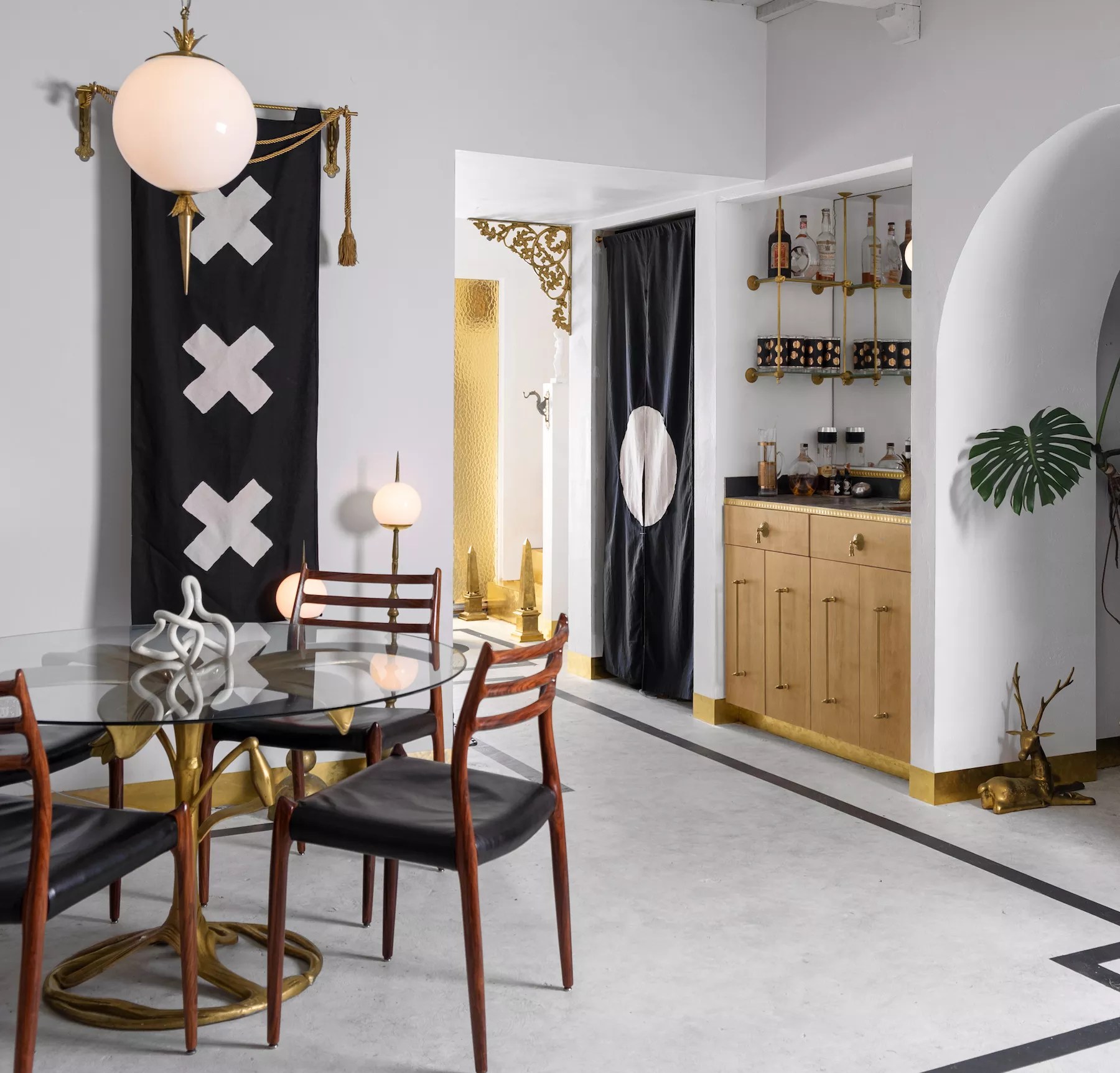
Many details in Miles McDermott
Miles McDermott
I forget to ask Lockley why he thinks some of us open up our homes during historic home tours, so I ask Miles McDermott when I visit his 1969 Place De Valencia condo. It’s the most-whispered-about home on this year’s Modern Phoenix tour; word of its hand-painted concrete floors, hand-made door hardware, and polka-dotted kitchen have reached others on the tour. One room has a shuttered door floating near the ceiling; in another, a taxidermized goat head stares past. (“It’s vintage, in case PETA asks,” McDermott promises.)
“I guess I do this so I can show people that you don’t have to just live for comfort,” says McDermott, an advertising art director who wants one day to work in interior design. “You can have style – your own style, and you can make it yourself.”
I get a very different answer when I visit Regina and Bradley Harris, who live in the Ellsworth Stryker Residence. Built in 1954 by Blaine Drake, it’s one of the 12 homes featured on the Modern Phoenix tour. Mine, an Al Beadle from 1964, is another.
“Why do we do this?” I ask the Harrises. “Are we showing off? Are we oddly house-proud?”
“I think it’s a disease,” Regina tells me. “Once you catch the home tour bug, you can’t get rid of it.”
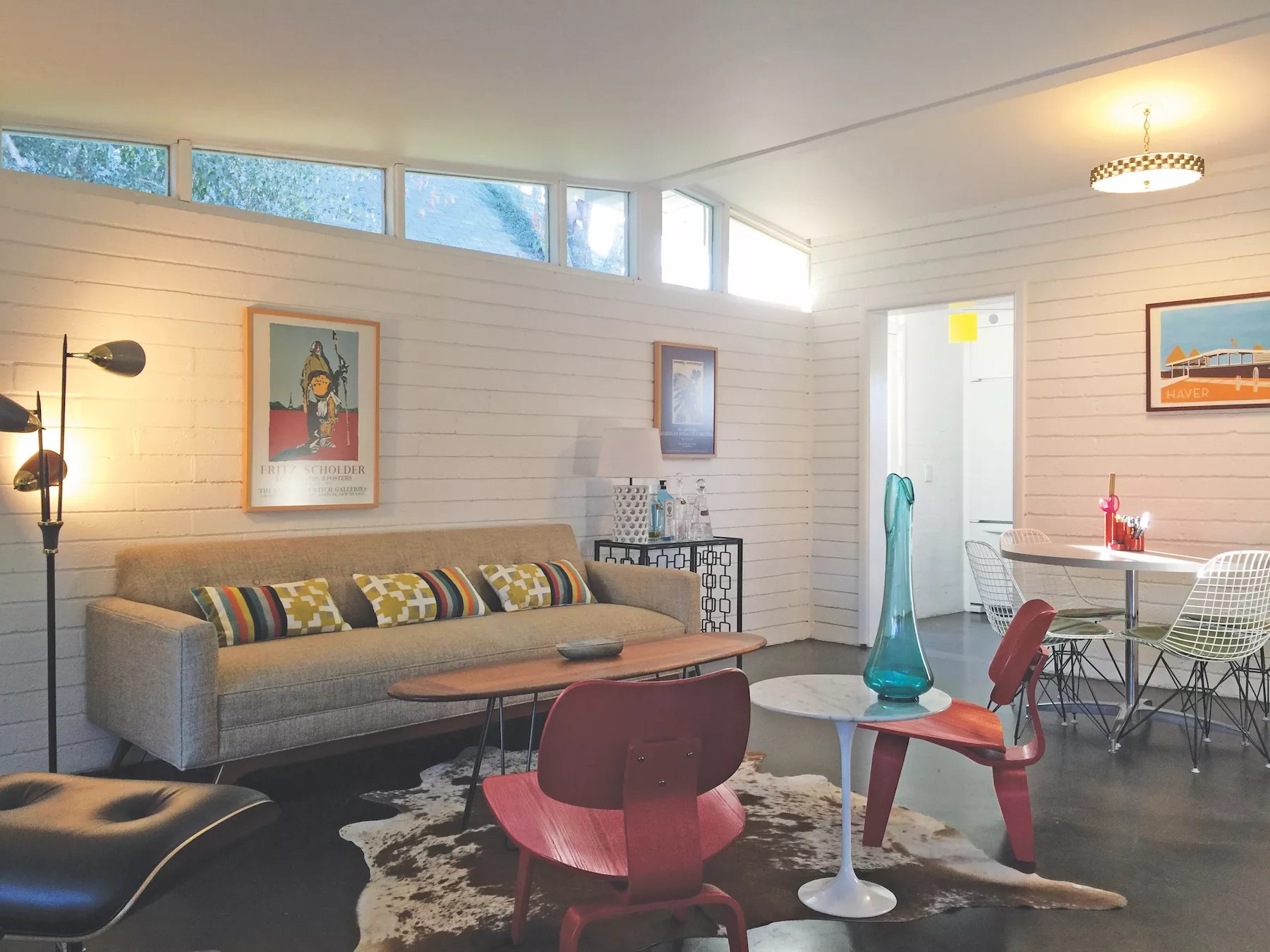
The home of Regina and Bradley Harris.
Regina Harris
Regina, with whom I’d bonded over our mutual hatred of refrigerator magnets, thinks another reason we throw open the doors to our unusual, period-correct homes is to enlighten people.
“Everyone wants to say that Midcentury Modern is popular because of Mad Men,” she says of the popular AMC drama set in 1960s Manhattan. “But this was already a movement long before that show ever was around.”
Bradley has another idea. “I think we’re home tour people because it’s nice to have 2,000 strangers come by and compliment you on your house.”
Though not everyone is so nice.
“There was this one guy here when we had the house on the Willo Home Tour,” Bradley remembers. “He walked through the house and then he went over to my son and said, ‘No one lives like this!'”
Bradley’s son pointed to his father. “He does,” he told the stranger. “He lives like this.”
Modern Phoenix Week 2020 runs from Friday, March 13 through Sunday, March 22. More information at modernphoenix.net.